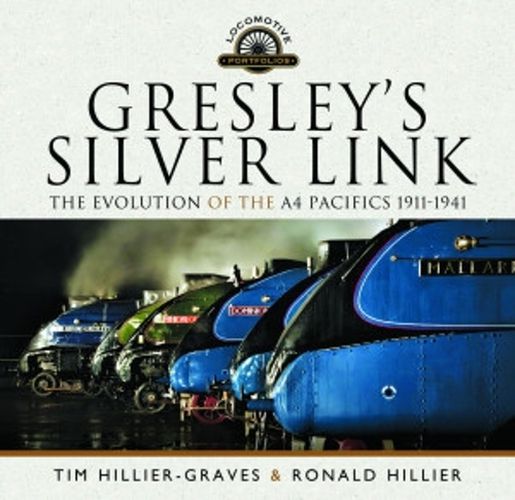Gresley's Silver Link: The Evolution of the A4 Pacifics 1911-1941
Tim Hillier-Graves

Gresley’s Silver Link: The Evolution of the A4 Pacifics 1911-1941
Tim Hillier-Graves
Gresley’s A4 Pacifics are arguably the most famous locomotives ever built, a status cemented by Mallard’s record breaking run on the 3rd July ‘38. And yet only a year later the glamorous 'streaks’ seemed likely to be cast into obscurity by the coming of another world war. So, for only four exhilarating years they were allowed to flourish as their creator had intended and in that time captured the imagination of railwaymen and public alike. With the help of previously unpublished material the author analyses the complex evolution of the A4s - a project that began in 1911 when Gresley was appointed as Locomotive Superintendent of the Great Northern Railway. It is a story with many strands to consider
war, peace and war again, engineering and art, politics and business, recession and social change, the growth of the media and consumerism, the struggle for professional reputations and a growing, deeply damaging international rivalry. All these elements are captured in the story of the A4s in the heady days before conflict ended their brief golden age and Gresley’s life came to an end. AUTHORS: Tim Hillier-Graves was born in North London in 1951, on leaving University he served with the Royal Navy seeing wide service on land and sea. For much of this time he specialised in weapon development projects, specifically missiles and heavyweight torpedoes, working alongside BAe Systems, Marconi Space and defence systems and Mc Donnell Douglas in the process. In support of this work he undertook prolonged periods study at the Royal Naval College, Greenwich and the Royal Military College of Science, Shrivingham. Later in his career he changed specialisms and focussed on human resource management and also outsourcing to industry. After which he became an assistant director with responsibility of housing for military personnel, from which he retired 2011, to concentrate more fully on writing. Ronald Hillier was born in North London in 1922. When only 18 he volunteered for service with the Army and saw much action in North Africa, Sicily and Italy. He landed in France on D Day plus 2, then, after a short period in hospital, returned to the battlefield to be involved in the drive across Europe to Germany. He was in the forward units that discovered Bergen-Belsen and returned a few weeks later to help burn it down with a flame thrower equipped Bren Gun Carrier. After ‘demob’ he returned to live in London and worked at the at Explosives Research and Development Establishment at Waltham Abbey as a chemist. He retired in 1984 and died shortly afterwards. From childhood to the end of his life he undertook detailed research into railway and military history, leaving his extensive collection to his nephew. It is this material, and an outline he left, that forms the basis of this book. 57 colour, 233 b/w illustrations
This item is not currently in-stock. It can be ordered online and is expected to ship in approx 2 weeks
Our stock data is updated periodically, and availability may change throughout the day for in-demand items. Please call the relevant shop for the most current stock information. Prices are subject to change without notice.
Sign in or become a Readings Member to add this title to a wishlist.


